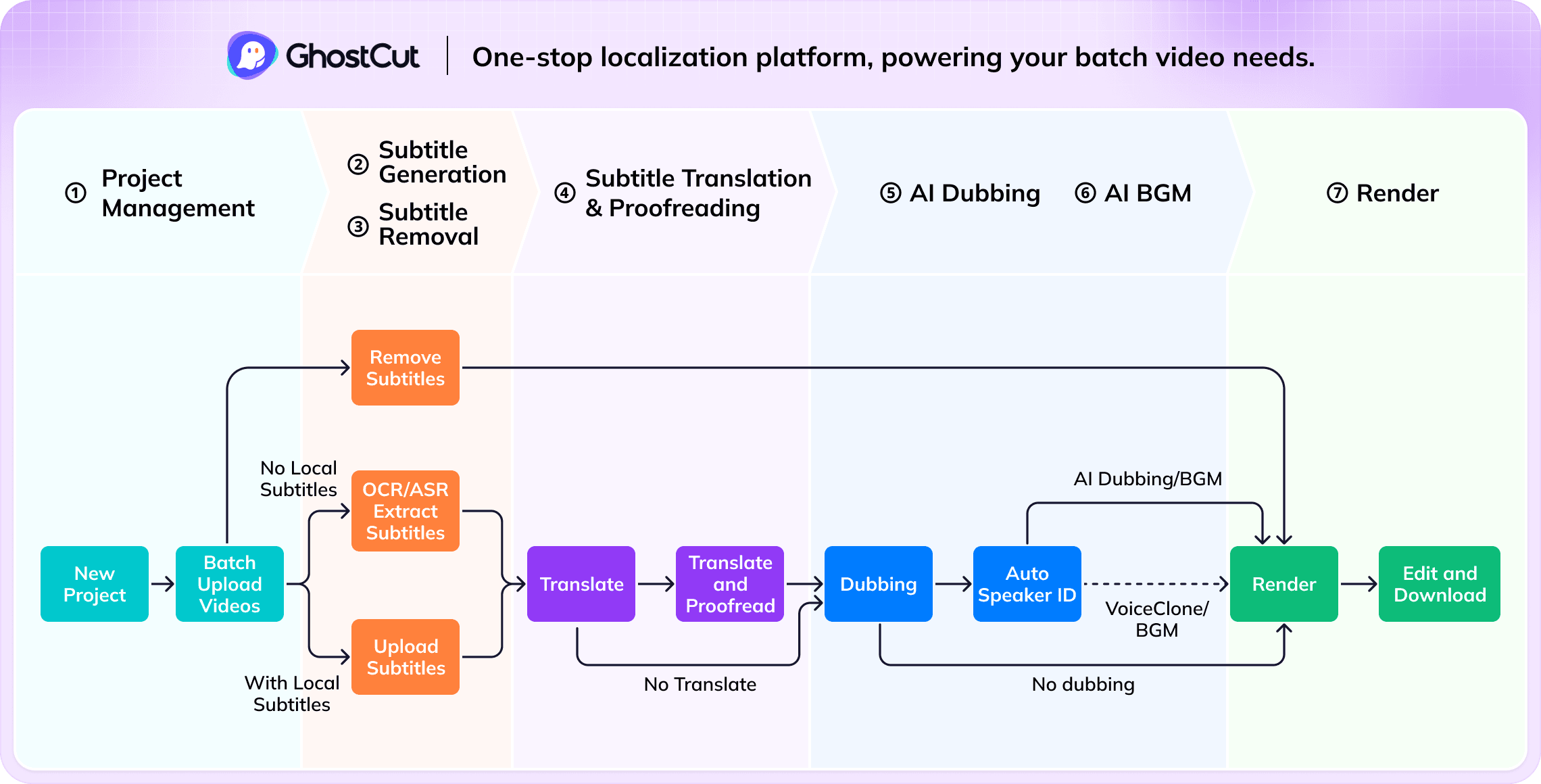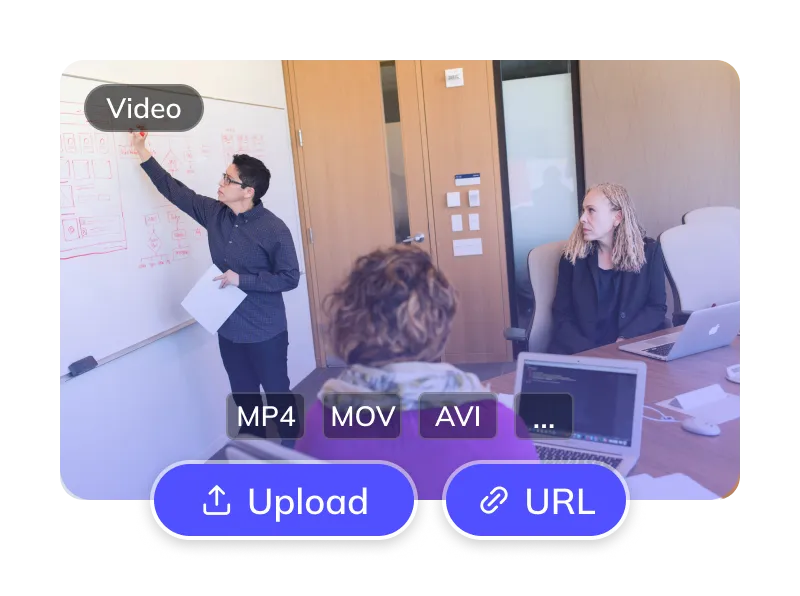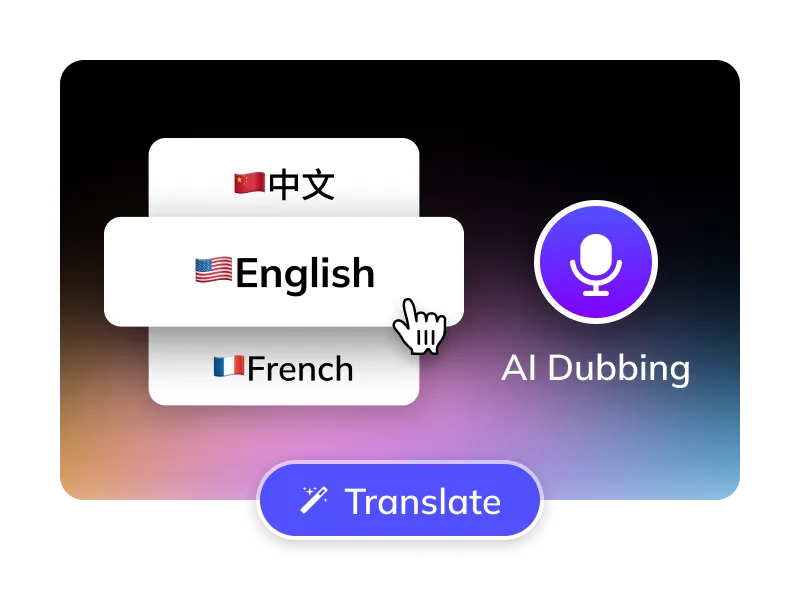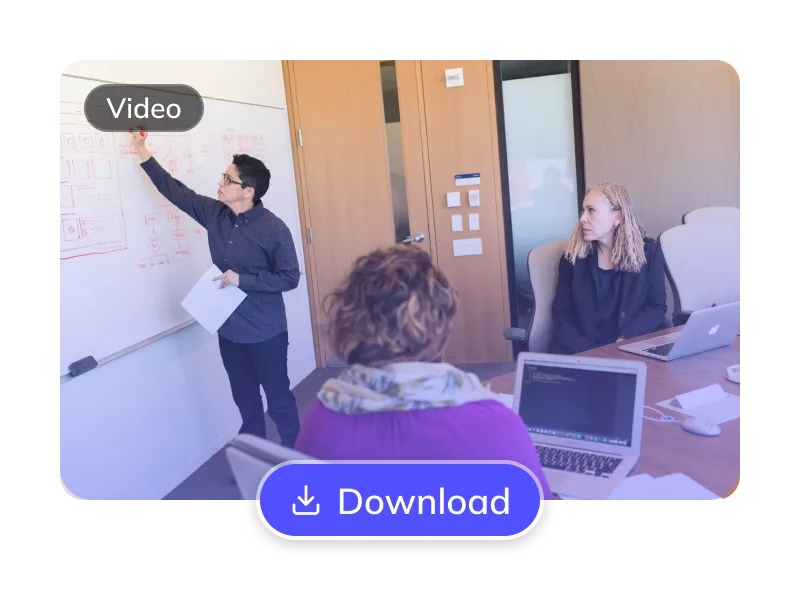How to Translate Arabic Videos to English ?
Translate Arabic Videos to Japanese in 3 Easy Steps
Trusted by 1,500,000+ Global Creators and Businesses
Why GhostCut for Your Video Translations?
GhostCut is your all-in-one AI solution for translating Arabic content into natural, engaging Japanese.
Effortless Project Management
Manage Arabic assets, subtitles, & Japanese videos. Batch process projects efficiently.
Pinpoint Japanese Accuracy
Up to 99.5% accurate. Optimized for Arabic-to-Japanese with LLM calibration & multi-agent review for culturally fluent Japanese translations.
Lifelike Japanese AI Dubbing
Choose from diverse, human-like Japanese AI voices (US/UK accents). Emotion-cloning technology captures original tone for natural Japanese delivery.
Flexible Arabic Subtitle Options
Optionally erase original Arabic hardsubs for a clean slate. Translate embedded Arabic subtitles directly.
Smart Multi-Speaker ID (Arabic)
AI detects multiple speakers in Arabic videos. Assign or clone distinct Japanese voices per character, with cross-episode consistency for complex Japanese dubs (dramas, interviews).
Efficient Batch Processing & API
Batch translate and dub 100s of Arabic videos to Japanese at once. Seamlessly integrate with our robust API.
Versatile BGM Control
Keep or mute original BGM. Our unique tech can also isolate sound effects, meeting diverse copyright and distribution needs.
Unbeatable Value
Flexible Arabic-to-Japanese plans. Try core features free. Automated pro service from just $0.1/minute.
Easy Online Access
No downloads. Instantly translate Arabic videos to Japanese online. Works on Windows, Mac, & major mobile browsers for cloud processing anywhere.
The GhostCut Edge: Unmatched Accuracy, Speed, and Value.
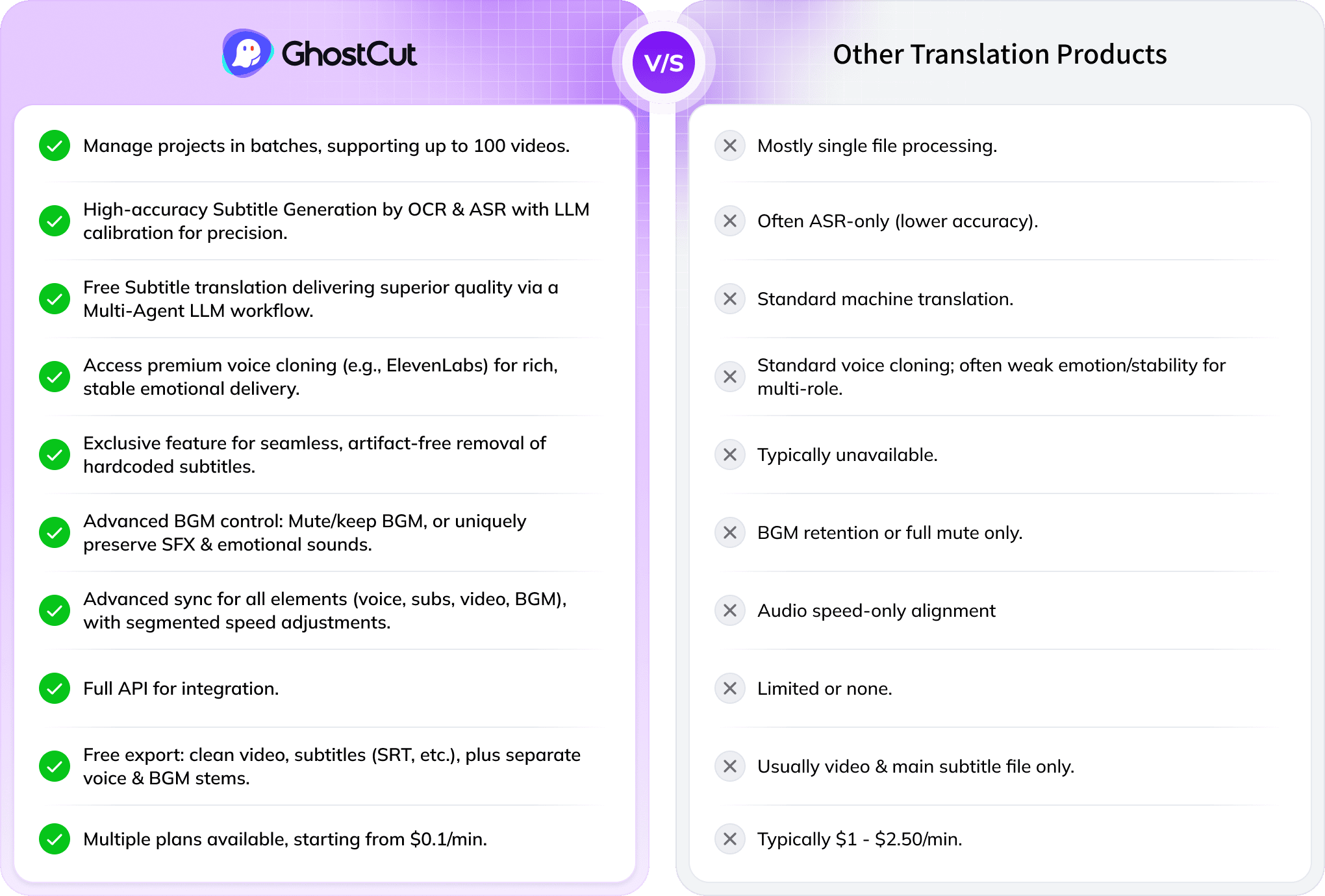
Every Algorithmic Optimization, Engineered for Quality Japanese Video
Mastering Long-Form Arabic Drama & Multi-Character Dubbing
Translating a 100-minute Arabic drama with 4000+ lines and many characters into Japanese is tough. Standard AI struggles to tell speakers apart, causing errors. GhostCut’s multi-modal AI (video, voice, text) excels in long-form, multi-speaker content, ensuring accurate, consistent character voices across entire series.
Translate Now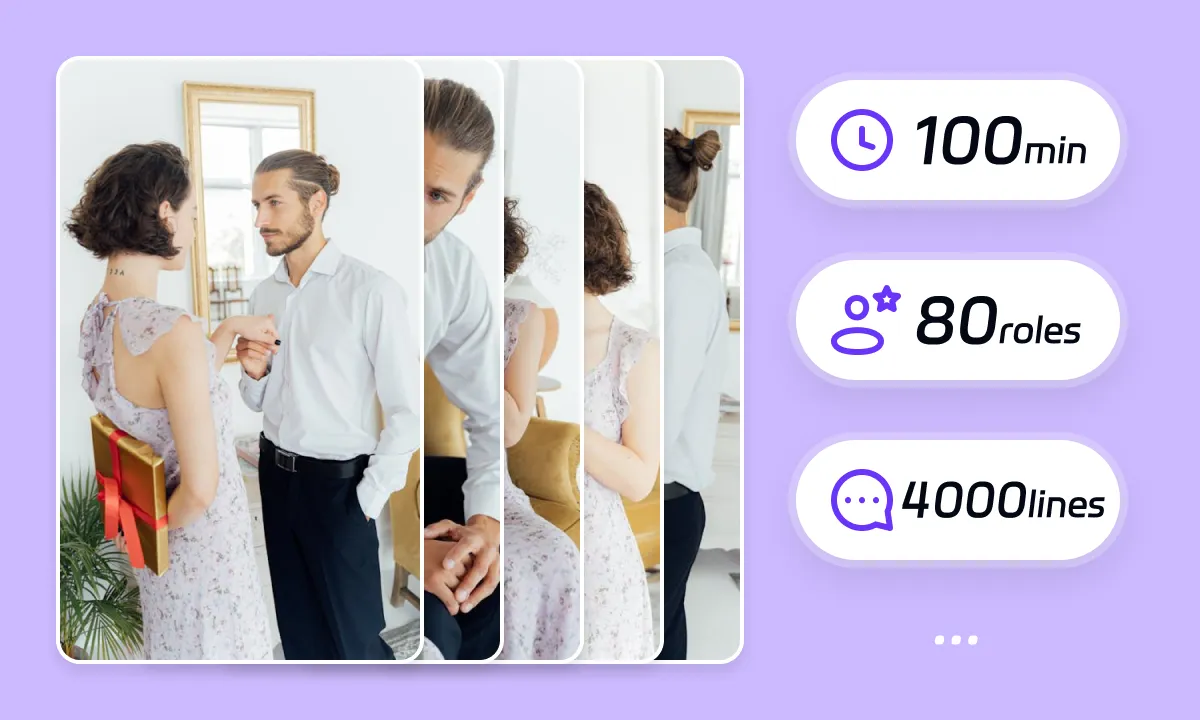
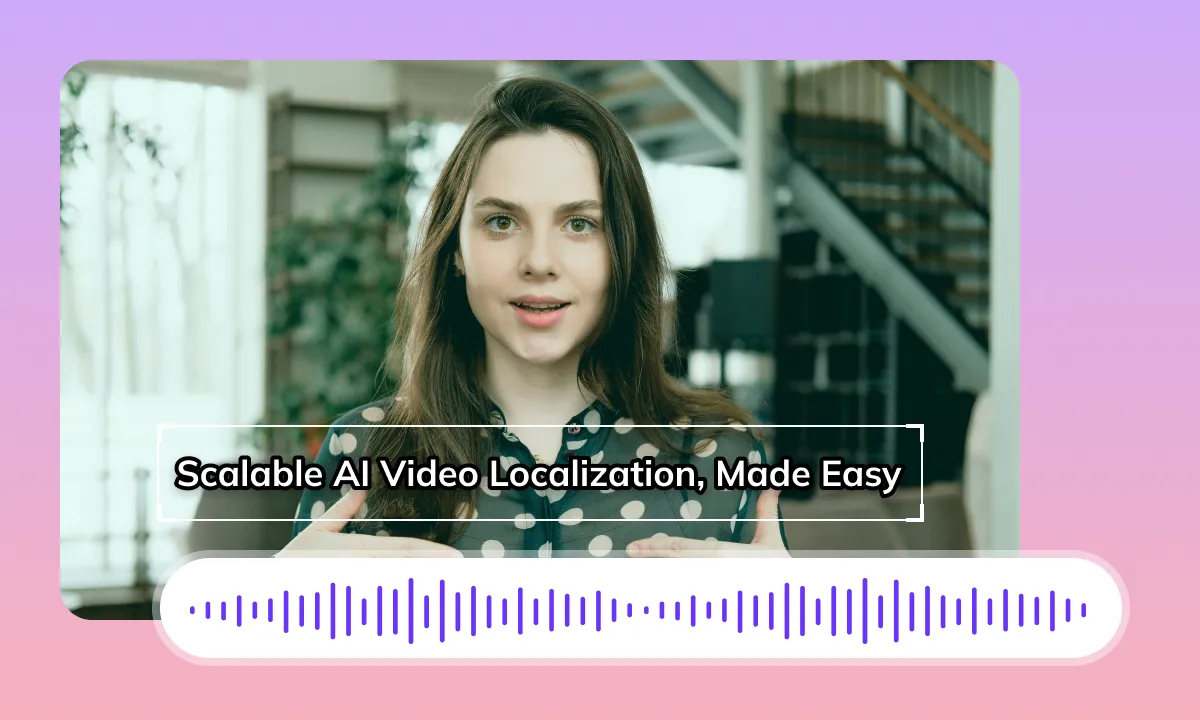
Seamless Japanese Dubbing & Perfect Lip-Sync
GhostCut ensures natural Japanese audio flow by treating related subtitles as whole ideas for TTS. It then precisely times new Japanese subtitles. Since Arabic-to-Japanese translation can change speech length, our AI expertly adjusts the new Japanese audio, subtitles, video, and BGM to maintain perfect sync, just like a seasoned editor.
Translate NowBoost ROI with Flawless Arabic Subtitle Removal
Original Arabic hardsubs can limit your video's global appeal. GhostCut’s AI doesn't just blur; it intelligently reconstructs the background obscured by Arabic subtitles, even complex ones, for a perfectly clean, high-quality visual. This means better viewer engagement, longer watch times, and higher ROI.
Translate Now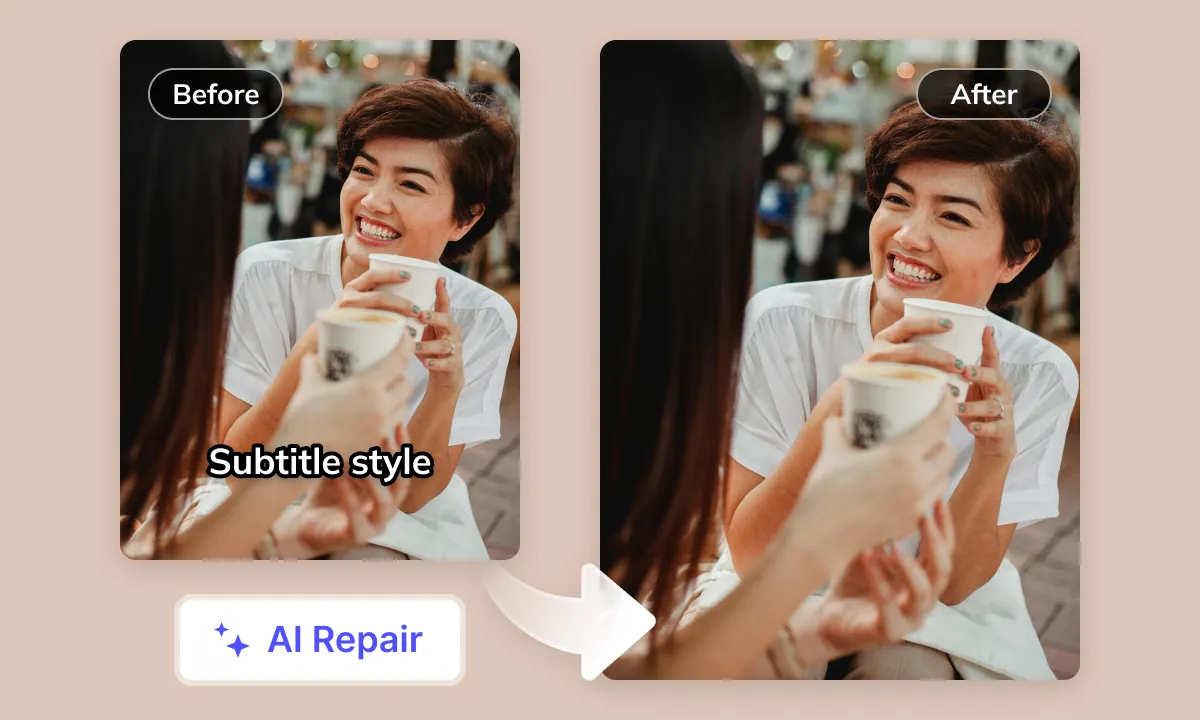
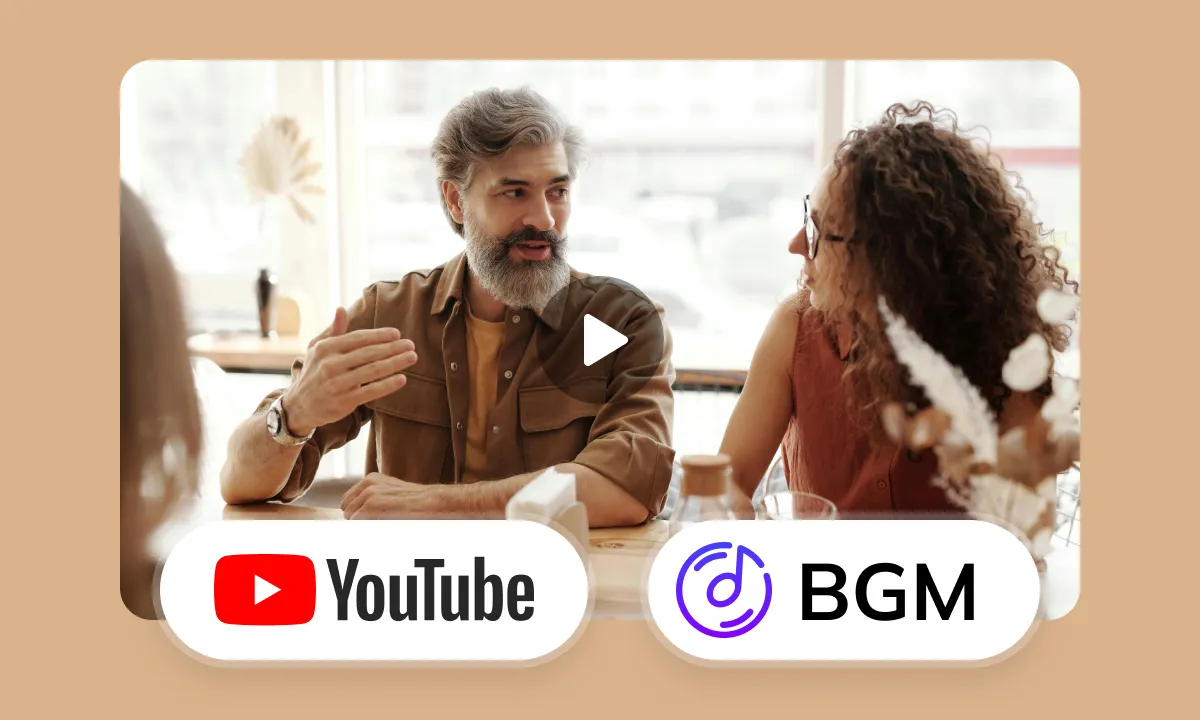
Smart Audio Control for YouTube Creators
Navigating BGM copyright on YouTube is tricky. GhostCut’s advanced audio separation isolates Arabic dialogue for translation, while intelligently managing BGM, sound effects, and even emotional expressions. Our "Keep SFX, Remove Music" option is a creator favorite for avoiding copyright issues without losing your video’s impact.
Translate NowArabic Content Can Captivate Japanese Viewers
Rich Arabic video content covers culture, travel, short films, and tutorials. However, language barriers prevent effective reach into the vast Japanese market. On platforms like YouTube and TikTok, the lack of quality Arabic-to-Japanese AI translation and dubbing creates understanding issues for Japanese users, significantly harming content appeal and cross-cultural reach. Thus, the market urgently needs a professional, efficient Arabic-to-Japanese AI video translation and localization solution
Arabic Video Translation to Japanese: Challenges and Insights
Hardcoded Subtitles Original Audio Obstacles
If the original video contains embedded Arabic hardcoded subtitles or original audio, their presence can interfere with viewers who wish to watch the Japanese version. Technical processing is required to remove or overlay them effectively
Cultural, Structural, and Lexical Challenges
Arabic and Japanese differ significantly in language structure (e.g., word order, complex conjugations, sentence patterns), vocabulary size, cultural idioms, and religiousregional expressions. Accurately and naturally transforming Arabic content, rich in Middle EasternNorth African cultural context, into Japanese expressions suitable for an East Asian cultural context is a core translation difficulty
Arabic and Japanese Subtitle Characteristics
Arabic is written right-to-left, with connected letters and no fixed 'block' forms. Japanese, conversely, uses a mix of Kanji and Kana, and can be written horizontally or vertically. When translating Arabic to Japanese subtitles, it's essential to completely re-engineer the layout, line breaks, and characters per line to suit Japanese reading habits and screen space, preventing crowding or insufficient display time
Speech Rate Discrepancies
Speakers of different languages vary in speech rate and rhythm when conveying the same information. Arabic speech can be fast, influenced by dialects and individual habits, while Japanese has its unique syllabic flow. This poses a challenge for maintaining precise temporal synchronization between Japanese voiceovers or subtitles and the original video visuals and audio
Arabic AI Recognition Challenges
The vast geographical spread results in numerous and significantly diverse Arabic dialects. Coupled with multi-speaker dialogue, background noise, and varying accents, the accuracy of Arabic Automatic Speech Recognition (ASR) can fluctuate considerably, impacting the quality of subsequent translation processes
Scarcity of High-Quality Japanese AI Voices
While Japanese AI voices exist on the market, finding those that accurately capture the original character's emotion, tone, age, and gender, especially voices that can naturally use Japanese honorifics and varying character tones, remains difficult. High-expressivity, scene-appropriate Japanese AI voice resources are relatively limited
Lip-Sync Synchronization Difficulty
Arabic pronunciation includes various unique guttural and fricative sounds, leading to fundamental differences in lip movements compared to Japanese pronunciation (primarily based on Kana syllables). Achieving visual lip-sync between Japanese voiceovers and the original video characters requires highly complex algorithms and meticulous adjustments
Standards for Top-Tier AI Video Translation
A mature AI Arabic-to-Japanese video translation system should achieve: highly accurate Arabic speech recognition (including dialect handling) - authentic and precise Japanese translation (considering cross-cultural and linguistic structural differences) - natural, fluent, and lip-sync-adaptable Japanese AI voiceover - efficient, automated audio-visual synchronization and timeline alignment
Tackling Video Translation Challenges with AI Empowering your Arabic content for any worldwide scenario.
Your All-in-One AI Translation Studio
GhostCut offers more than just Arabic-to-Japanese translation. It's a complete AI-powered workflow: subtitle extraction 、 removal 、 translation and proofreading to multi-character dubbing , BGM processing, and final rendering. Go from Arabic source to global-ready videos, effortlessly.
